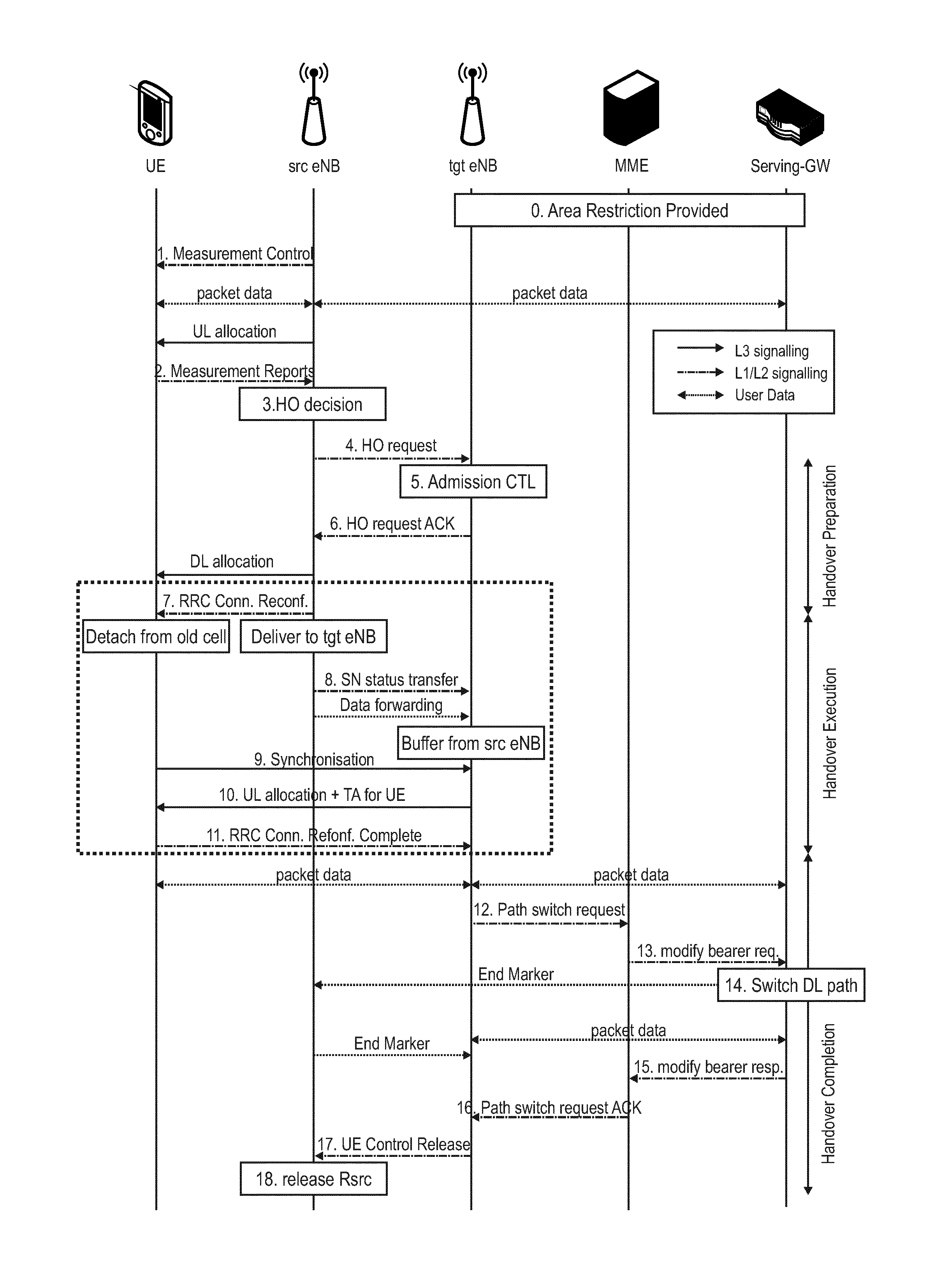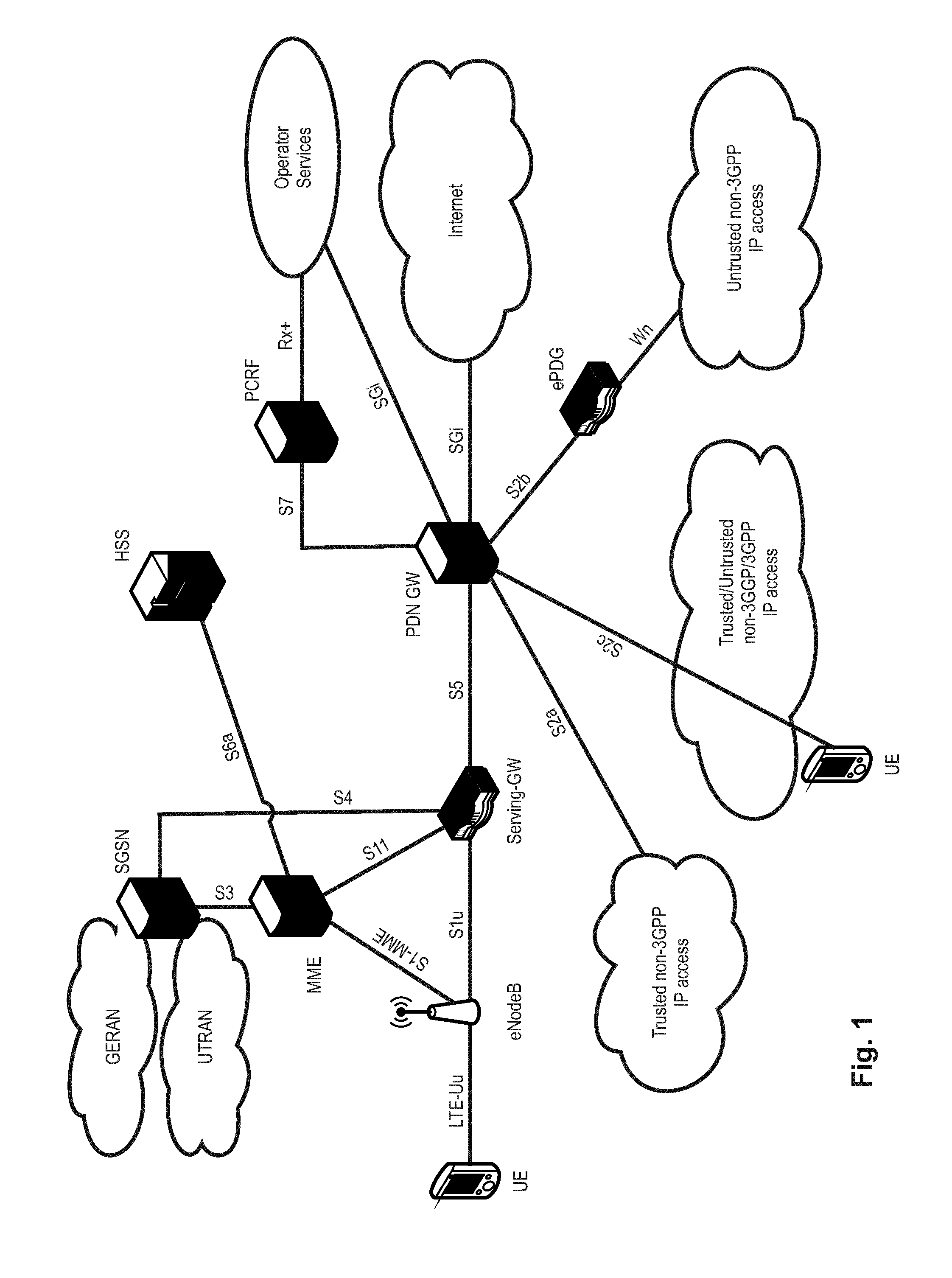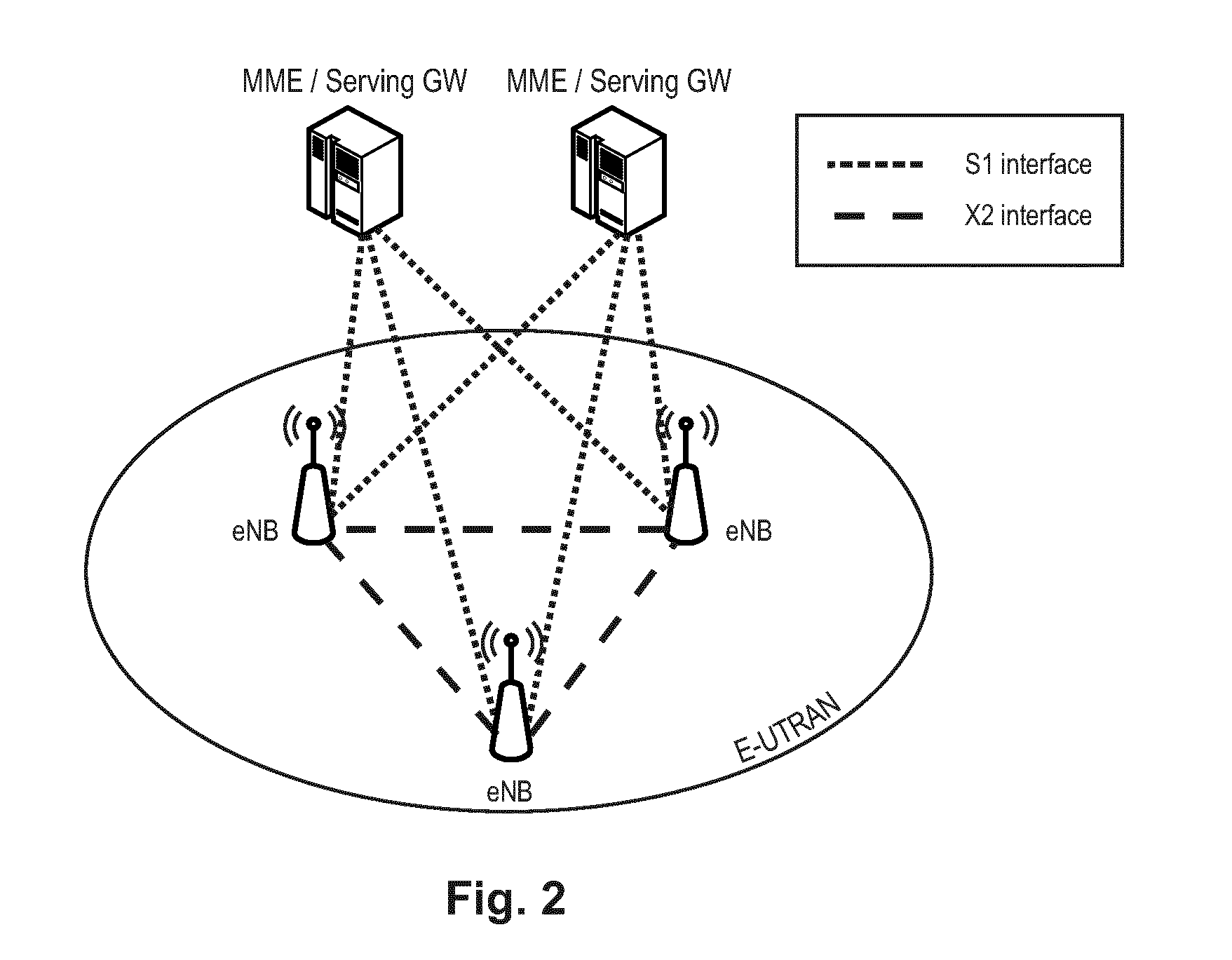Handoff procedure in a mobile communication system
a mobile communication system and handoff procedure technology, applied in the field of handoff procedures in mobile communication systems, can solve the problems of difficult to successfully receive the handoff command by the ue, complex preventive solutions in the state-of-the-art, and not completely clear how, so as to improve the reliability and robustness of the decision to handoff to the target base station
- Summary
- Abstract
- Description
- Claims
- Application Information
AI Technical Summary
Benefits of technology
Problems solved by technology
Method used
Image
Examples
first embodiment
[0191]Referring now to the first embodiment of the invention, various implementations of an improved handover procedure are to be discussed in connection with FIGS. 11 to 14. Specifically, FIG. 11 illustrates a sequence diagram of the handover procedure to a target base station to be performed by a mobile terminal.
[0192]In the context of the first embodiment, it is assumed that the mobile terminal is initially configured for communication with a source base station via a source radio cell. The mobile terminal is in the RRC CONNECTED state with respect to the source radio cell. The mobile terminal then performs the handover procedure for it to be configured for communication with the target base station via a target radio cell. As a result of successful completion of the handover procedure, the mobile terminal detaches from the source radio cell, and remains in the RRC CONENCTED state with respect to the target radio cell.
[0193]The handover procedure is performed under control of the...
second embodiment
[0243]Referring now to the second embodiment of the invention, various implementations of improved configurations of measurement cycles are to be discussed in connection with FIGS. 15 to 16. Specifically, FIG. 15 illustrates a sequence diagram of the configuration of measurement cycles of a mobile terminal by a master base station.
[0244]In the context of the second embodiment it is assumed that the mobile terminal, for which the measurement cycles are configured by the master base station, is connected via a macro radio cell to the master base station and via a small radio cell to the secondary base station.
[0245]For configuration of the measurement cycles, the master base station, according to the second embodiment, determines (c.f. Step S1501 in FIG. 15) a geographical distance between the master base station and the secondary base station both serving the mobile terminal. As already pointed out at the beginning of the detailed description, the term path loss may be used as an equ...
PUM
 Login to View More
Login to View More Abstract
Description
Claims
Application Information
 Login to View More
Login to View More - R&D
- Intellectual Property
- Life Sciences
- Materials
- Tech Scout
- Unparalleled Data Quality
- Higher Quality Content
- 60% Fewer Hallucinations
Browse by: Latest US Patents, China's latest patents, Technical Efficacy Thesaurus, Application Domain, Technology Topic, Popular Technical Reports.
© 2025 PatSnap. All rights reserved.Legal|Privacy policy|Modern Slavery Act Transparency Statement|Sitemap|About US| Contact US: help@patsnap.com



